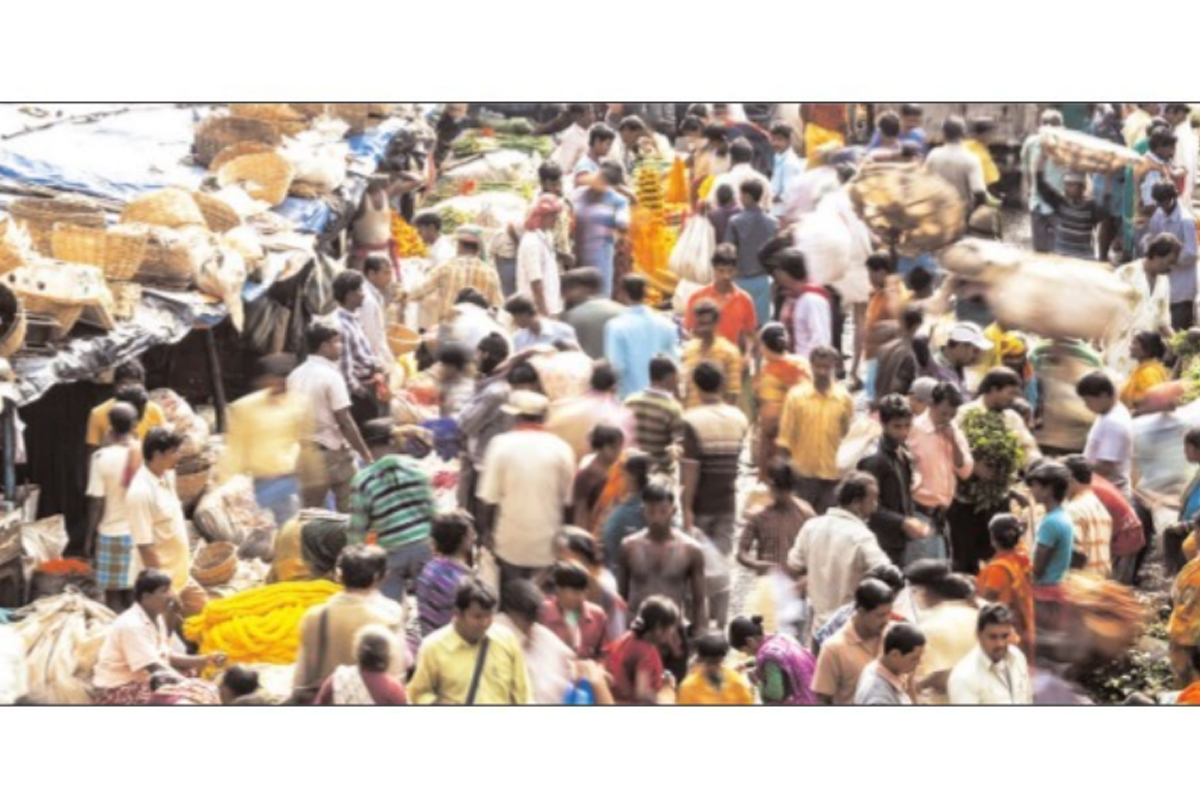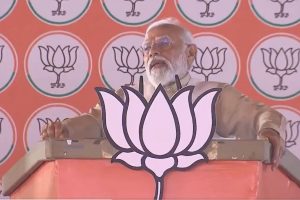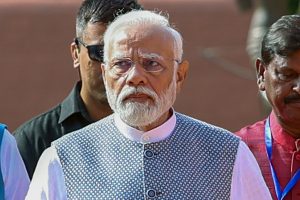After the disastrous consequences of Sanjay Gandhi’s population control experiments of the Emergency era, all Governments have fought shy of taking any measures for controlling our burgeoning population. An overview of global demographic patterns provided by the World Population Prospects 2019: Highlights (published by the Population Division of the United Nation’s Department of Economic and Social Affairs) predicts that with a population of about 147 crore, India would be the most populous country in the world in 2027. Sadly, this prediction has not sent alarm bells ringing in our country.
Though the Economic Survey 2019 has devoted an entire chapter to population issues (Chapter 7: India’s Demography at 2040: Planning Public Good Provision for the 21st Century), the focus is entirely on the 2040s. Beginning on a highly optimistic note the Survey states: “India is set to witness a sharp slowdown in population growth in the next two decades…the national Total Fertility Rate (TFR) is expected to be below replacement level by 2021.” This assumption is belied in the latter part of the chapter wherein the authors admit that population would grow at about 1 per cent during 2021-31 and about 0.5 per cent during 2031- 41. The growth in population despite the TFR being below the replacement level is explained as being due to population momentum (read: illegal immigration from neighbouring countries) and the continued rise in life expectancy.
Surprisingly, the Economic Survey 2019 does not discuss the shortage of houses, hospitals, schools, roads etc in the next decade, which would beset us because of our rising population.
Rather, the Survey looks far ahead dreaming of a rosy future while ignoring the dismal present. For example, the Survey posits that the number of school-going children would decline by 18.4 per cent by 2041 and recommends the formulation of a policy to consolidate/ close down elementary schools. It would appear that the Survey chose to ignore the immediate problem of shortage of school rooms where several classes are taught in the same room by the same teacher. Also, enrolment in primary schools is 96 per cent but only 40 per cent children attend grades 9 to 12. A fall in dropout rates would require an increase in the number of schools or conversion of primary schools to secondary schools, not a consolidation/closing down of schools.
The adverse -effects of unbridled population growth are manifest everywhere ~ be it our hugely overpopulated cities or falling agricultural land holdings. Problems of poverty, unemployment, sanitation, rising crime all are due to the absence of population control. Long-term prospects are also not encouraging: India is set to increase its population by more than 27 crore (i.e. 20 per cent) by 2050. We can, perhaps, take a cue from China which is predicted to reduce its population by 34 crore (i.e. 24 per cent) by 2050. One definitely feels that we desperately need a systematic study of population growth and formulation of a policy to control population.
According to the Annual Report of the Department of Health and Family Welfare 2016-17, 12.9 per cent of our population has no access to family planning services, 26.8 per cent of girls get married below the age of 18 years and in 48.1 per cent of births spacing between two childbirths is less than the recommended period of 3 years. These statistics show that the future may not be as bright as imagined. A friend who runs an NGO that provides milk to poor pregnant and lactating women at Aanganwadis was surprised to find girls as young as 20 on their second or third pregnancies. Most of these women were malnourished. It appears that the National Population Policy 2000 which brought about a holistic and a target free approach has taken the urgency out of the Government’s efforts for population control.
At present, the role of the Government in family planning is limited to making contraceptive facilities available at Primary Health Centres (PHCs) and SubCentres (SCs) in rural areas as well as the Urban Family Welfare Centres and Postpartum Centres in urban areas. Volunteers called Accredited Social Health Activists (ASHA) distribute contraceptives and pregnancy testing kits to beneficiaries at their doorsteps. On paper, this may appear sufficient but looking at the way PHCs are run one can well imagine the services that would really be available there. As regards ASHA workers, they are not volunteers but unqualified and minimally trained health workers who are paid a pittance as an incentive for certain tasks they perform.
The Muzaffarpur tragedy that took a toll of 160 young lives epitomises all that is wrong with healthcare for the common man in India. The condition of the Primary Health Centres in Muzaffarpur was so poor that none of the 103 PHCs in Muzaffarpur was considered fit even for evaluation and as against a requirement of 43 Community Health Centres (one CHC for every 1.2 lakh population) Muzaffarpur had only one CHC, which also was not fit for evaluation. National Family Health Survey (NFHS)-4, conducted in 2015-16, found that Muzaffarpur district had an abysmal record of child nutrition with about half the children under the age of 5 being stunted, 17.5 per cent being too thin for their height and more than 40 per cent children being underweight. The Survey also found that about 60 per cent of Muzaffarpur’s children were anaemic. Mothers fared little better with a similar proportion of women being anaemic. Medical textbooks flag a weak immune system (which may be brought about by malnutrition) as a significant risk factor for encephalitis but initially, the outbreak of encephalitis in Muzaffarpur was blamed on litchi.
Encephalitis regularly strikes Muzaffarpur since 1995. Despite regular annual outbreaks, none of Muzaffarpur’s two public hospitals had a super-speciality ward for encephalitis or a children’s ICU. After the last major outbreak of encephalitis in 2014, a super-speciality ward for encephalitis and a children’s ICU had been promised to Muzaffarpur but the promises are yet to be realised. Thus, the tragic outbreak of encephalitis in Muzaffarpur has exposed the real state of child and maternal nutrition and health. Sadly, the same conditions obtain in most of the poorer regions of our country.
Some significant learning outcomes emerge from the encephalitis outbreak in nearby Gorakhpur in 2017. The BRD Medical College at Gorakhpur, which has a tertiary care centre for Encephalitis with 100 dedicated beds, recorded 1,300 casualties in 2017 because patients did not reach the hospital in time. But next year, when the Government launched a massive vaccination drive and a sanitation campaign, encephalitis cases dropped by two-thirds. Therefore, the way forward is to ensure that primary healthcare reaches all corners of the country.
The short point is that the deprived sections of society, which are being targeted for family planning by the Government, will hardly follow the two-child norm if they are not assured of having two healthy children who have a fair chance of reaching adulthood. To provide healthcare for everyone, the Government has to ensure that every district has an adequate number of PHCs and CHCs which are properly manned and which have an adequate stock of medicines.
This can only be achieved if we increase expenditure on healthcare (which currently stands at 1 per cent of our GDP) to upgrade our primary health infrastructure and provide nutritional supplementation to poor children. Once a proper health and nutrition infrastructure is in place, a Family Planning Mission can be launched on the lines of Swachh Bharat Mission. Additionally, couples could be incentivised to follow the two-child norm. By providing incentives and better public healthcare, the Government would be able to persuade the targeted population to have only two children, which would ensure that we are spared the calamity waiting for us in coming times ~ should we continue on our wayward trajectory.











